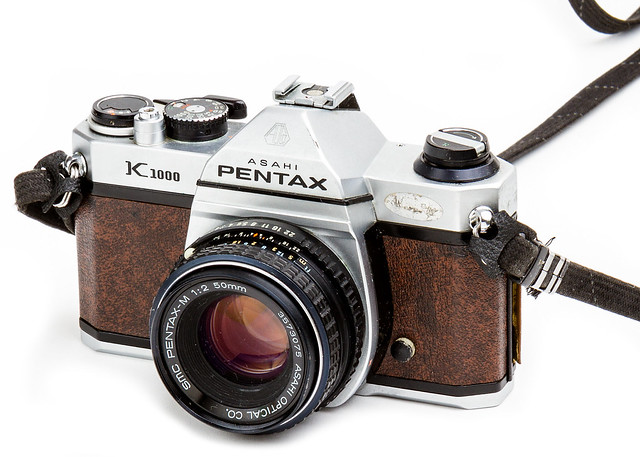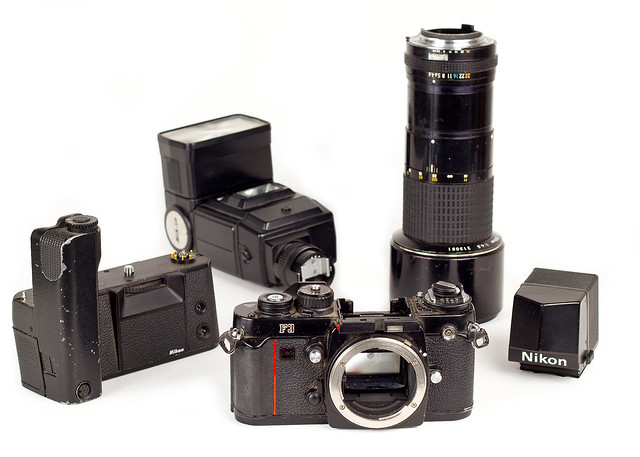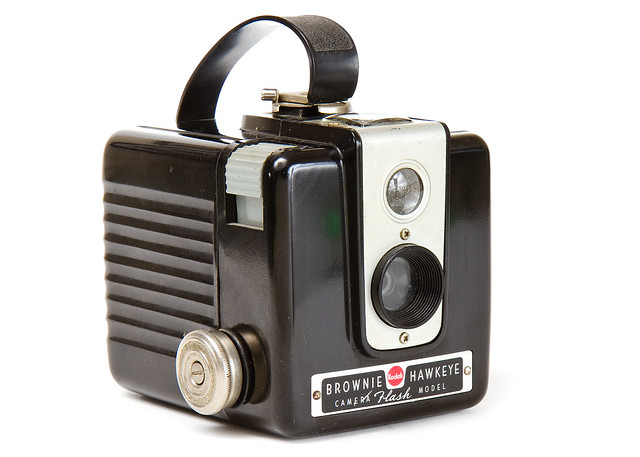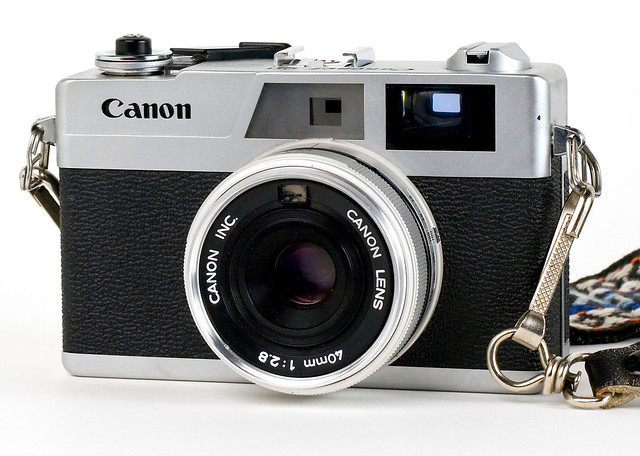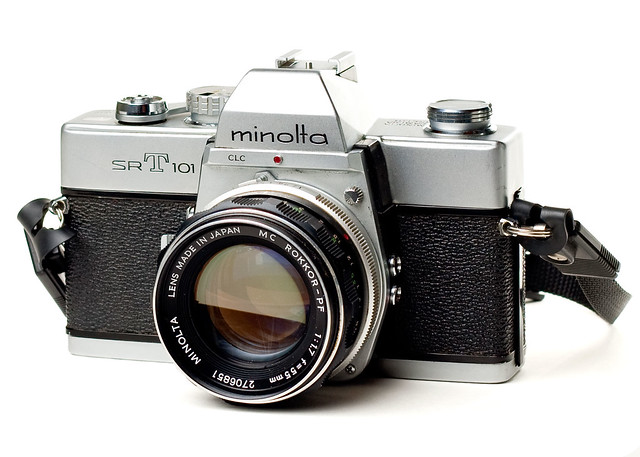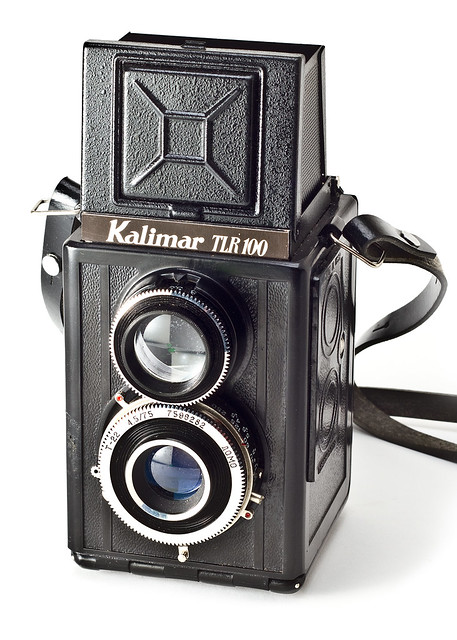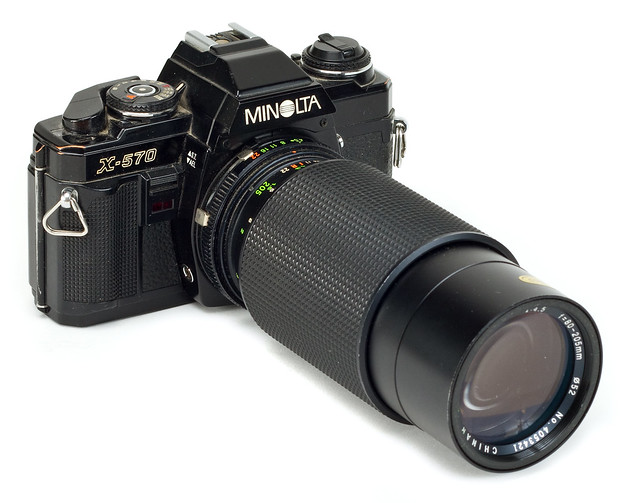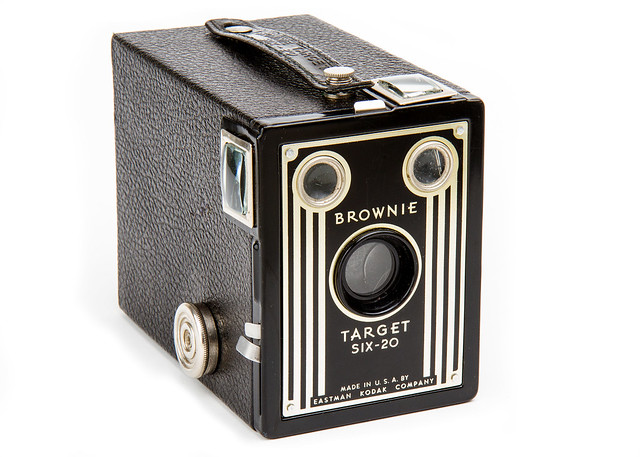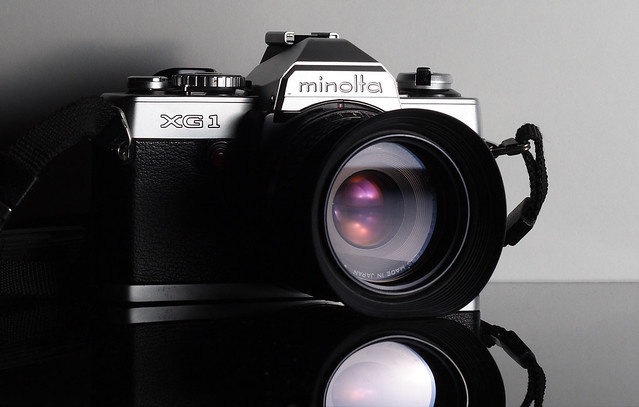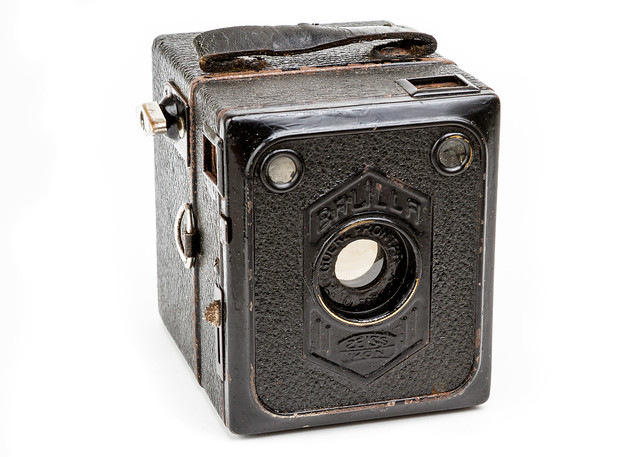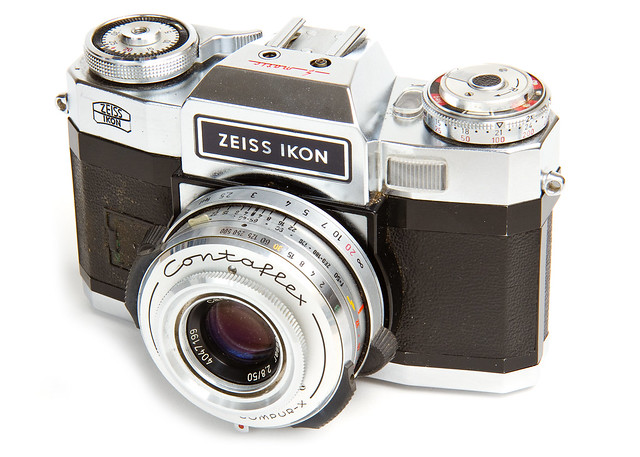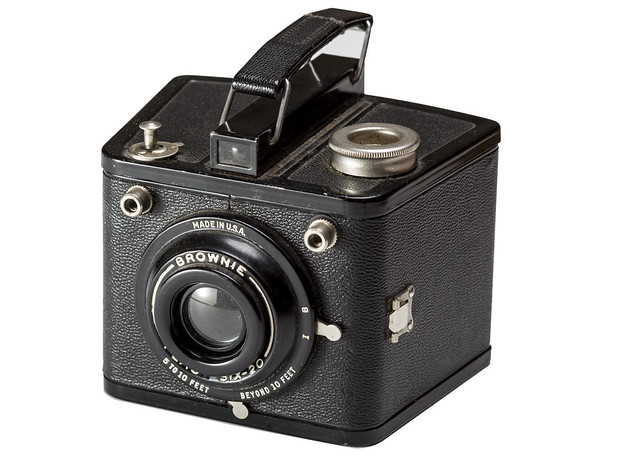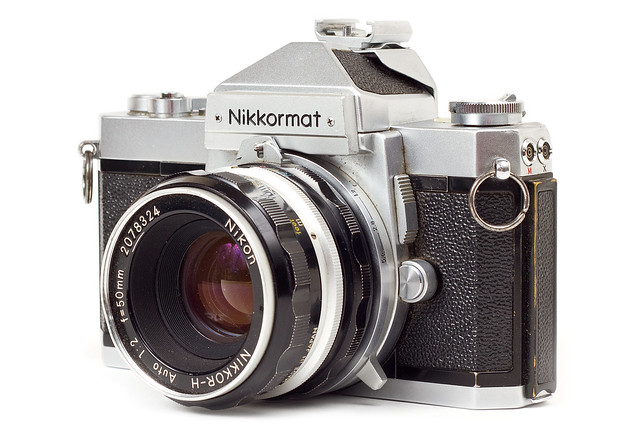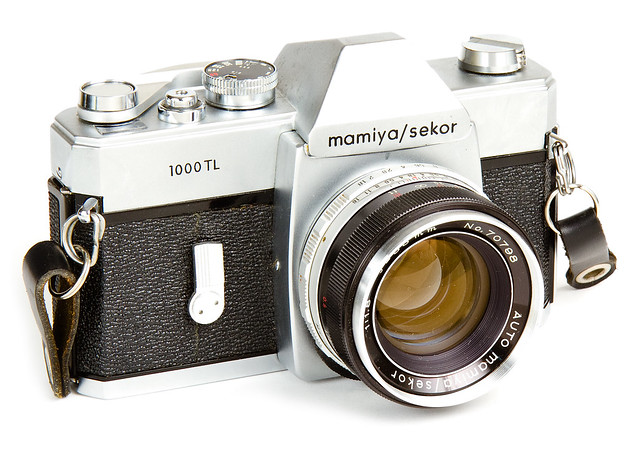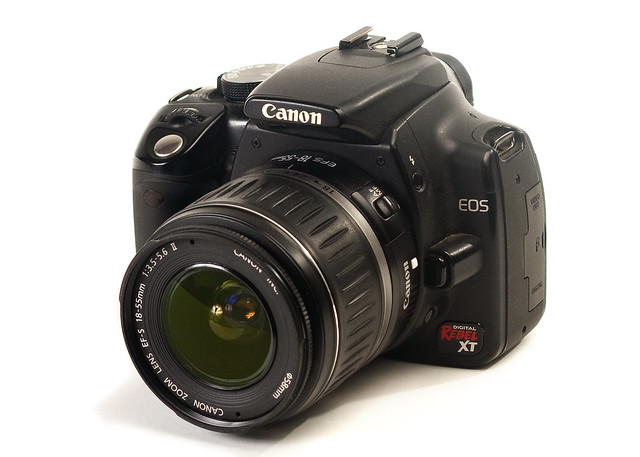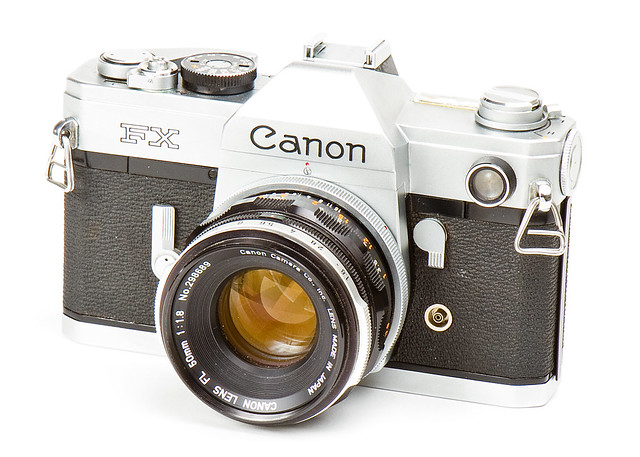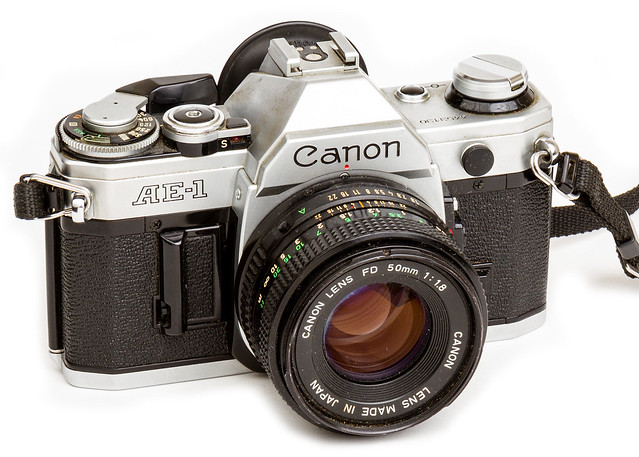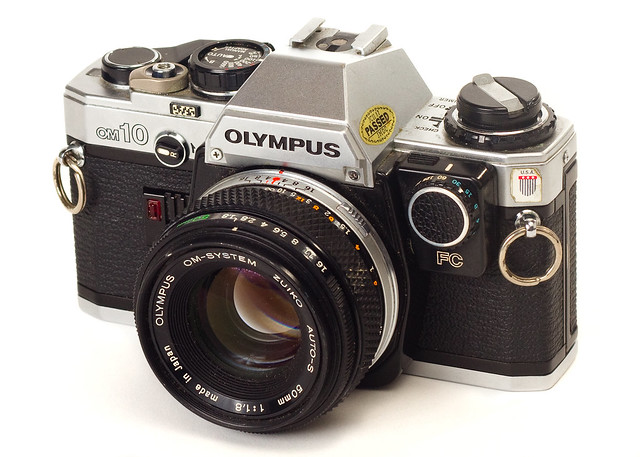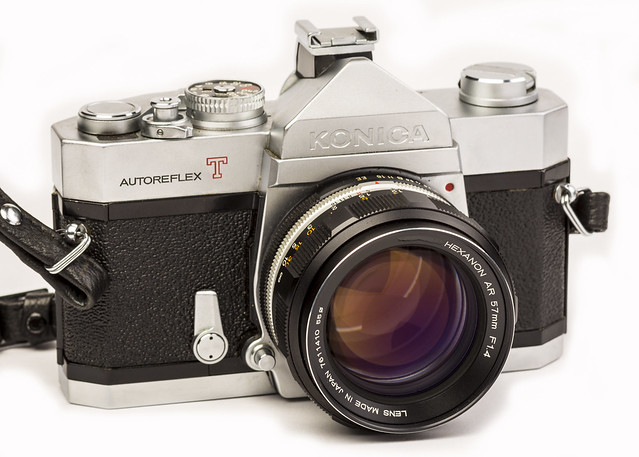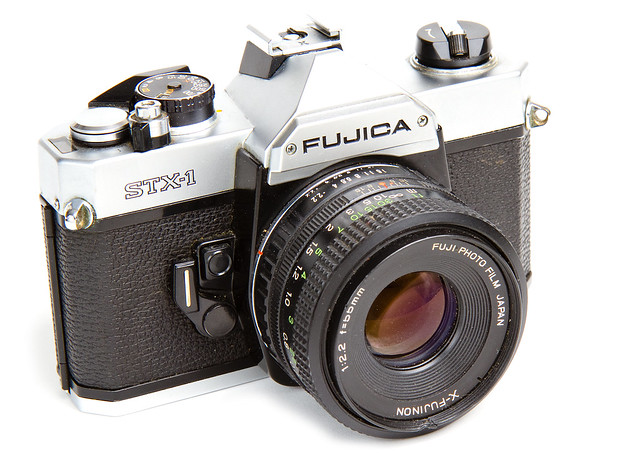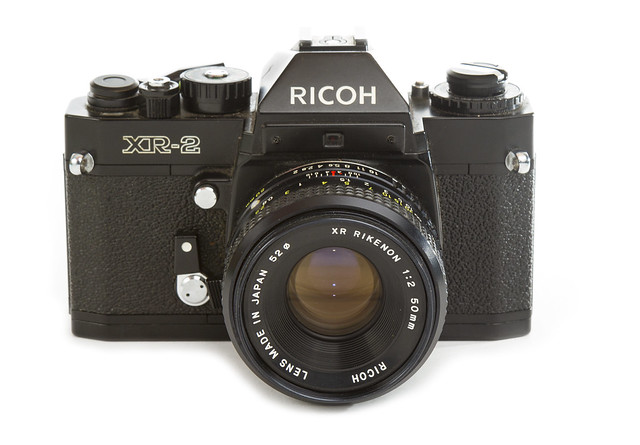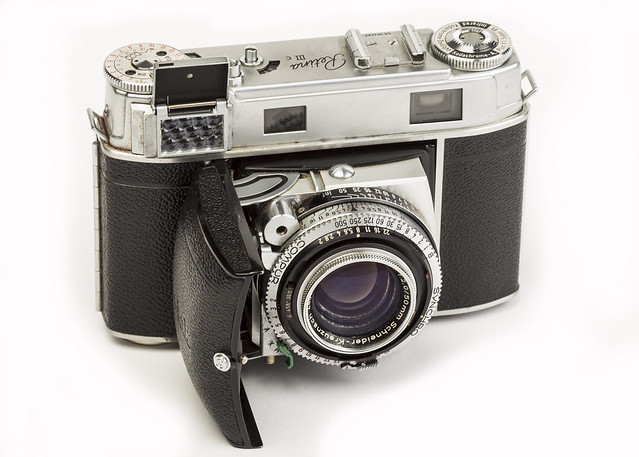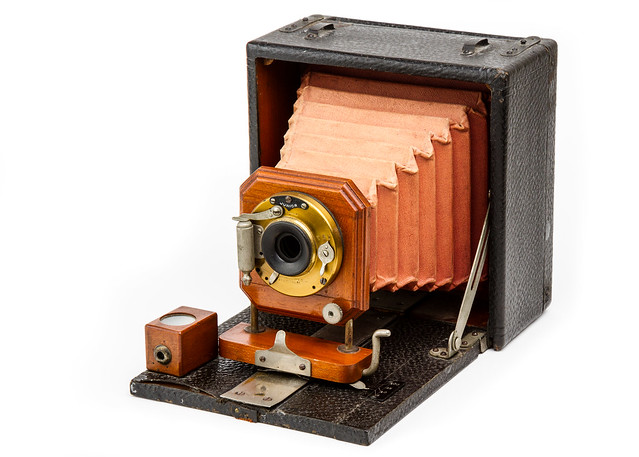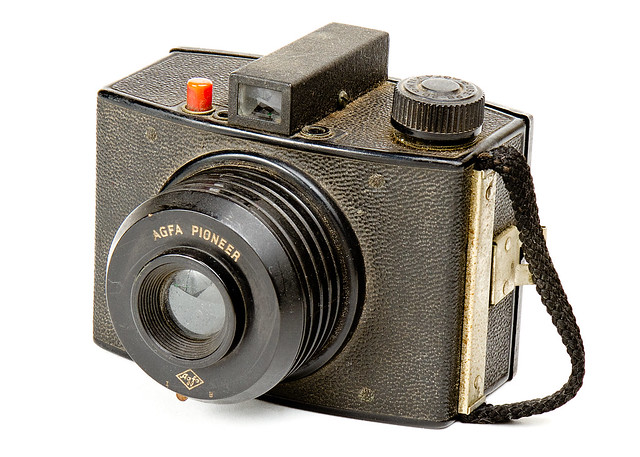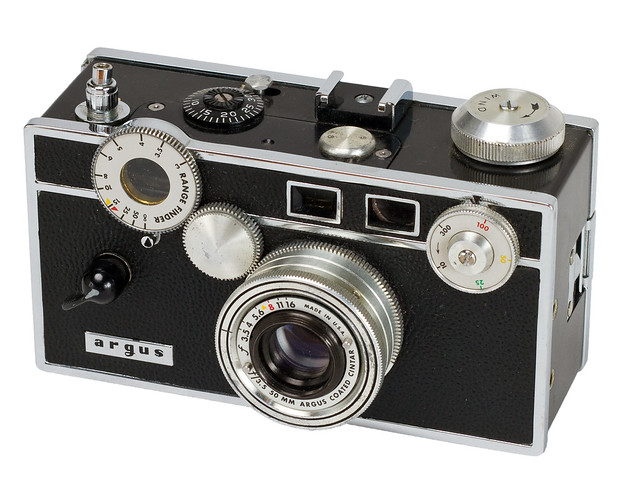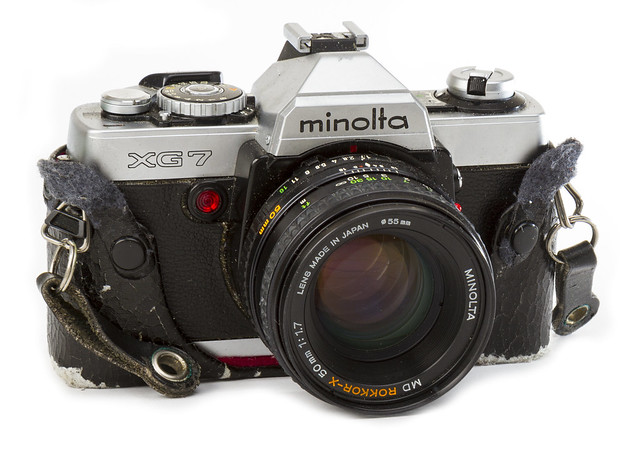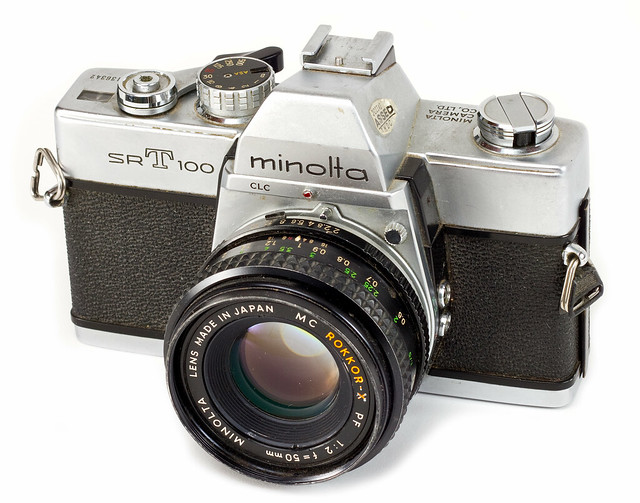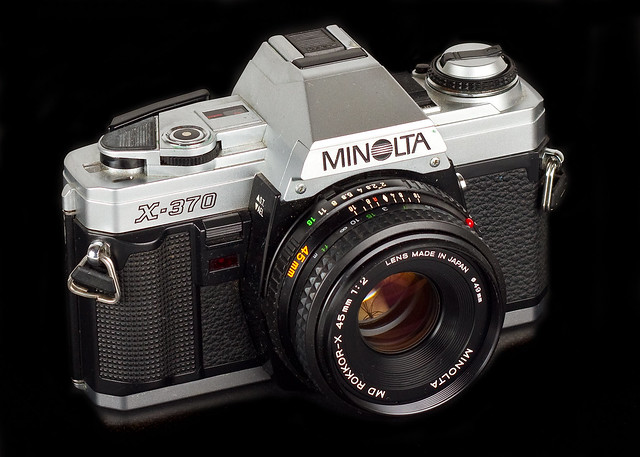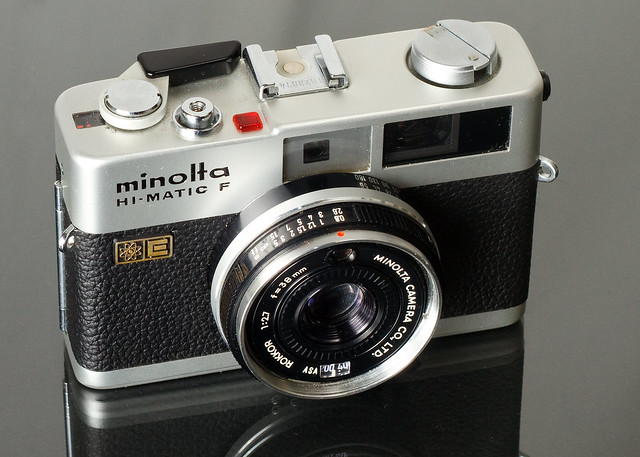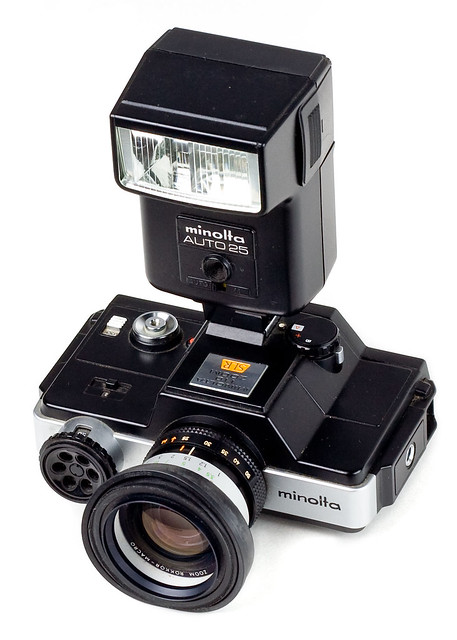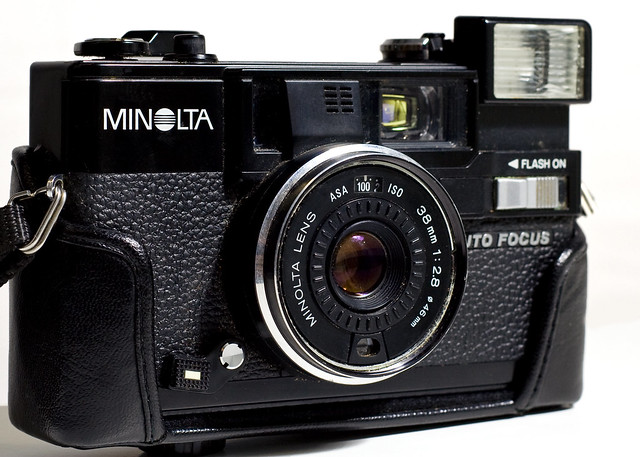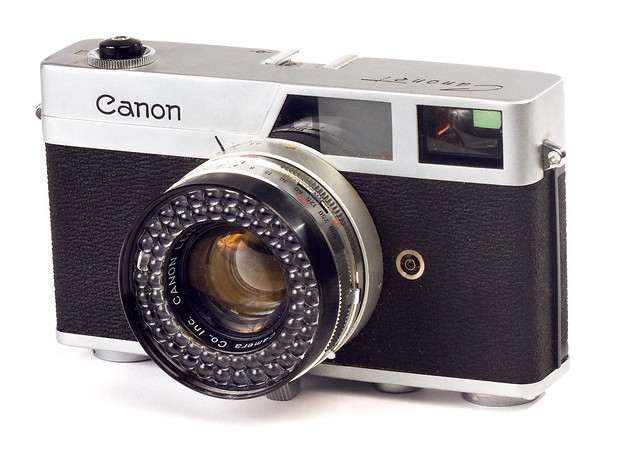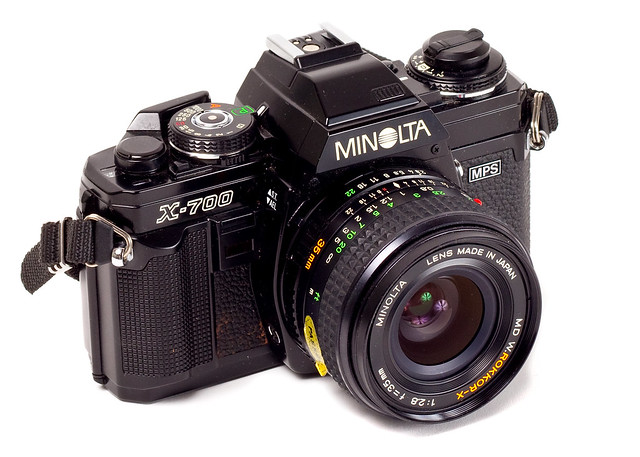
My workhorse black and white film camera. I actually own two copies of this in case one dies. It was released in 1981 and was the last top line Minolta manual focus SLR before they went on to make auto-focus cameras. I've run quite a few rolls of film through this camera and it still shoots like a dream. I almost always shoot it in aperture priority mode and use the exposure compensation dial to over-ride the meter when necessary. I especially like it paired with my favorite lens - the Rokkor 55mm f/1.7(with red filter) - a lens I acquired on a Minolta SRT-101. The only work I've done to this camera was replacing all the light seals around the film door and on the mirror damper - pretty standard for a camera of this age. I'm impressed how well its done for me considering it was made when camera manufactures were switching to plastic parts and electronically controlled everything(it can't be shot without batteries).

